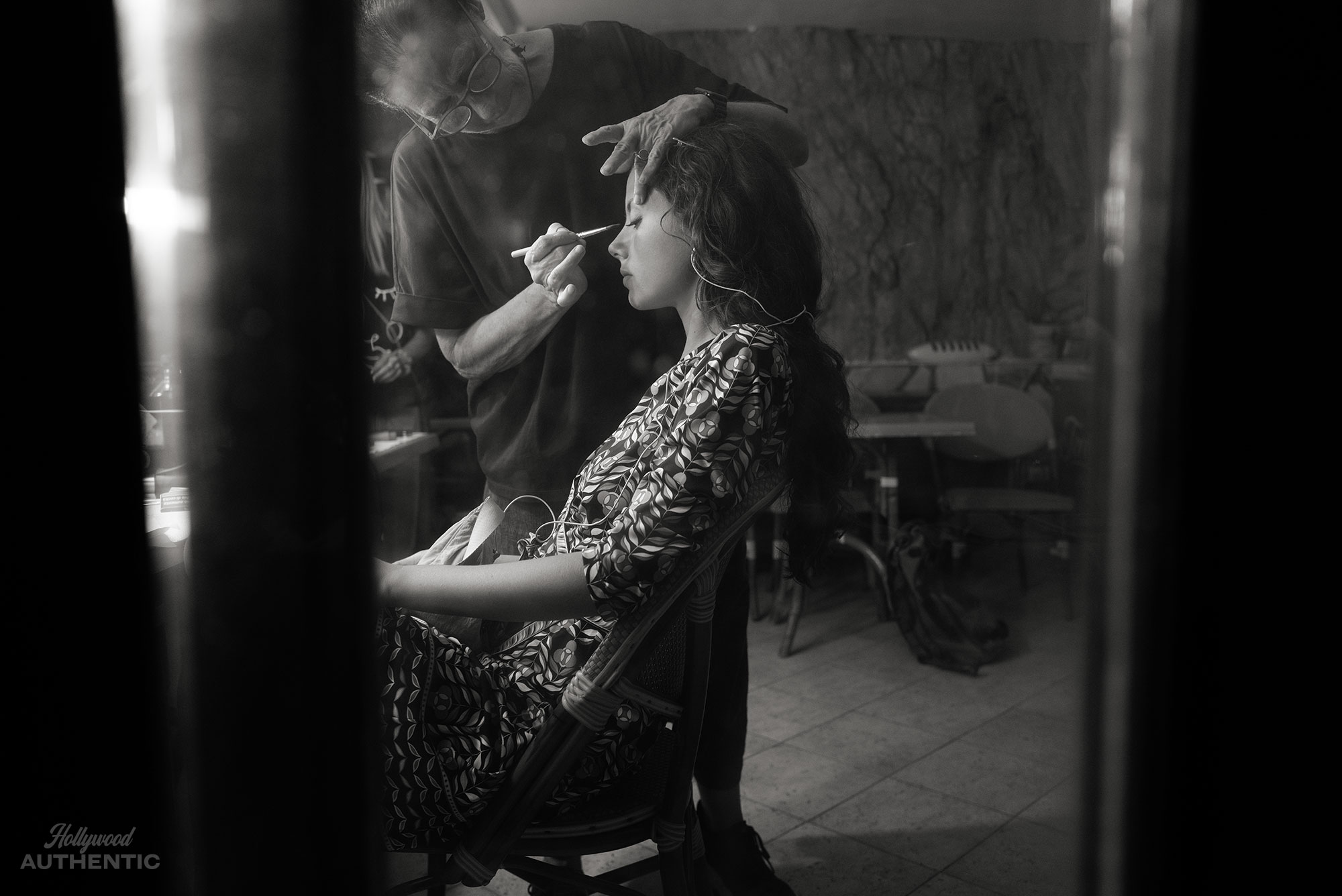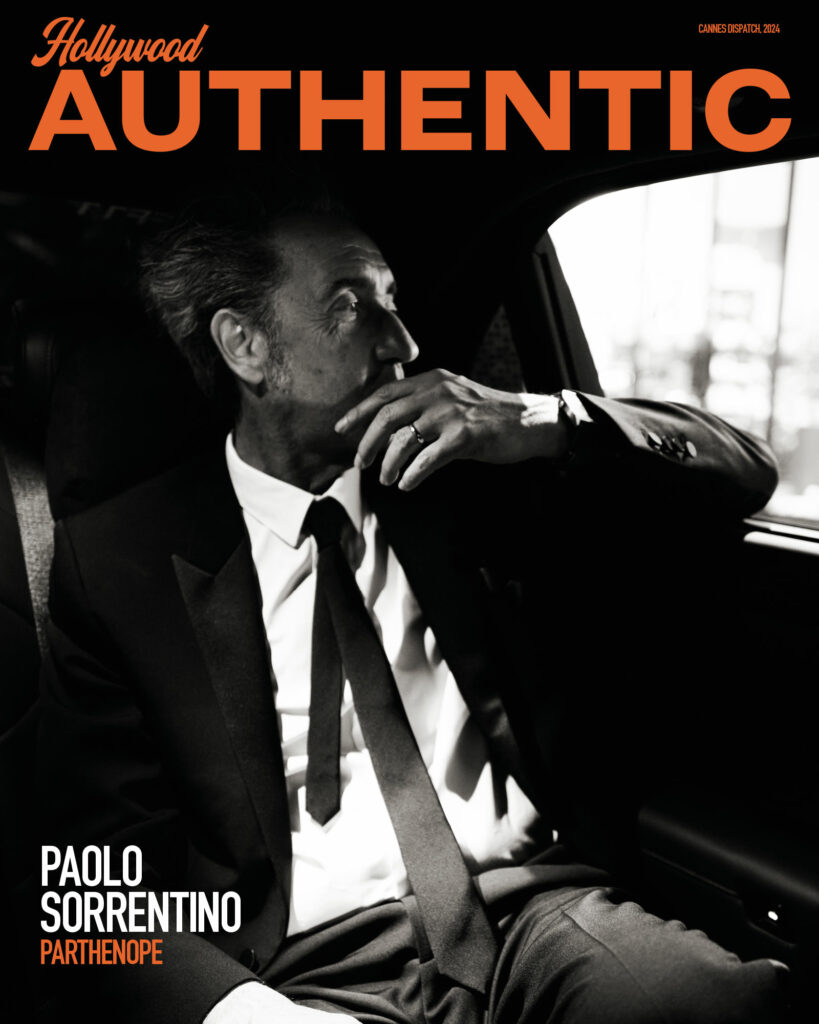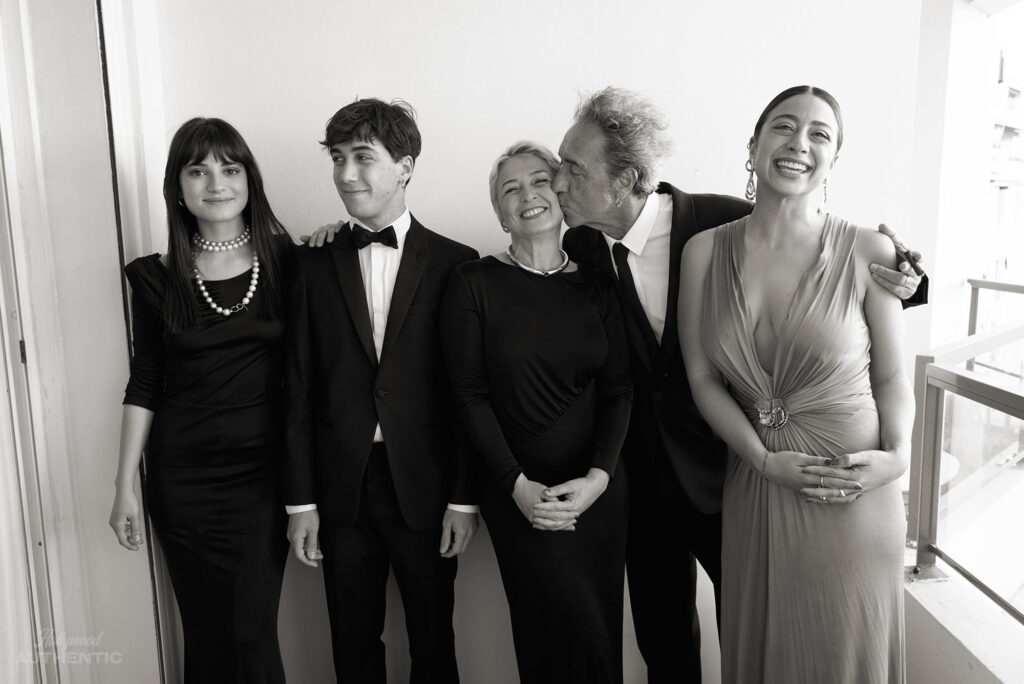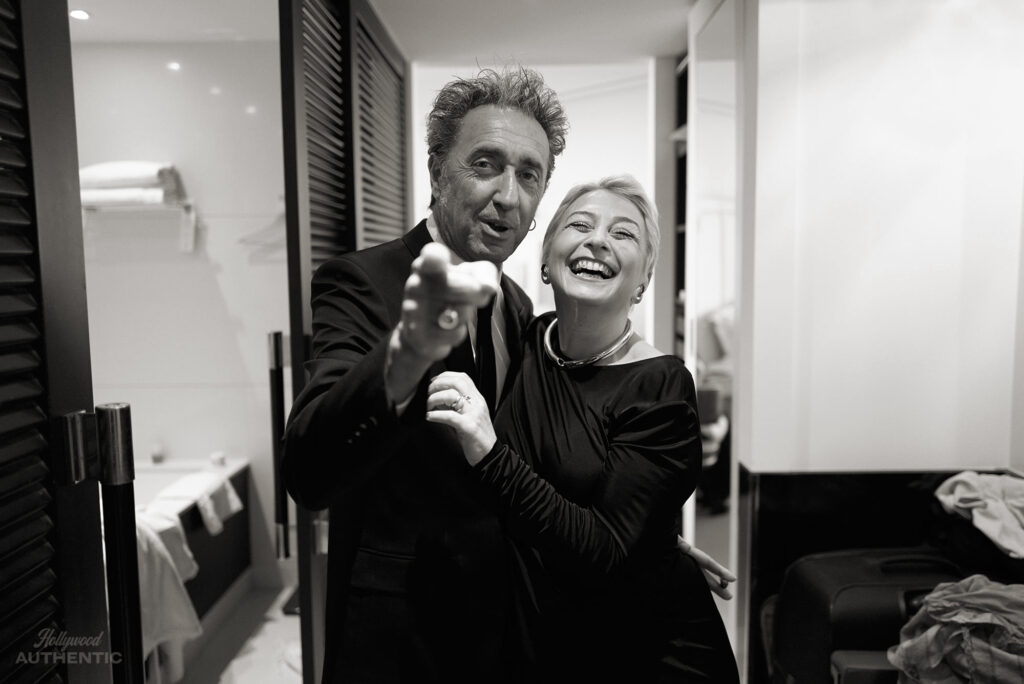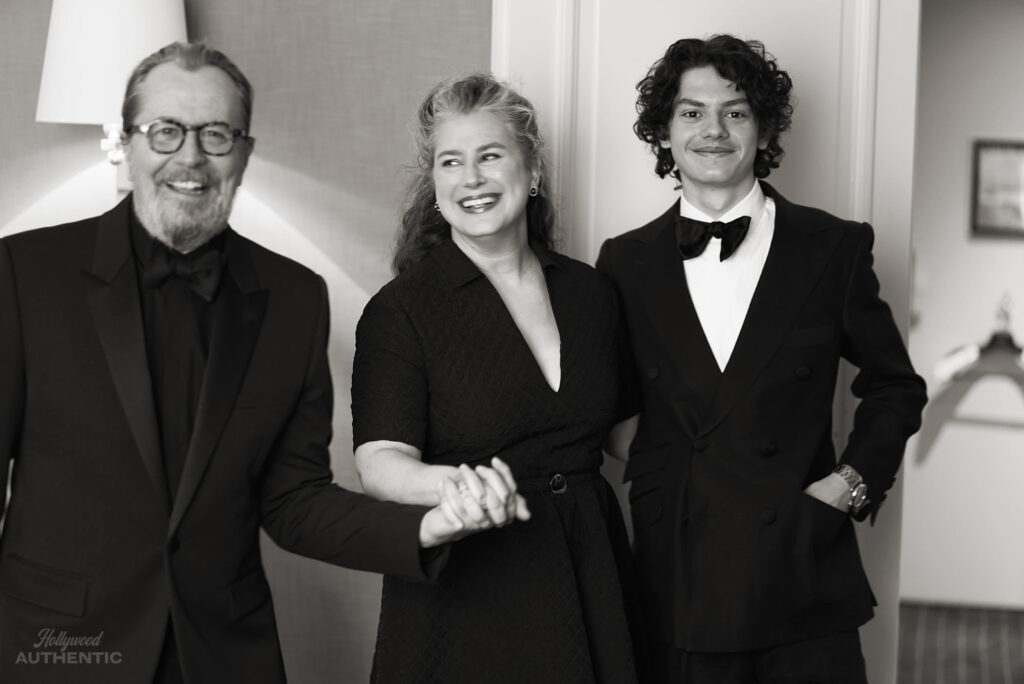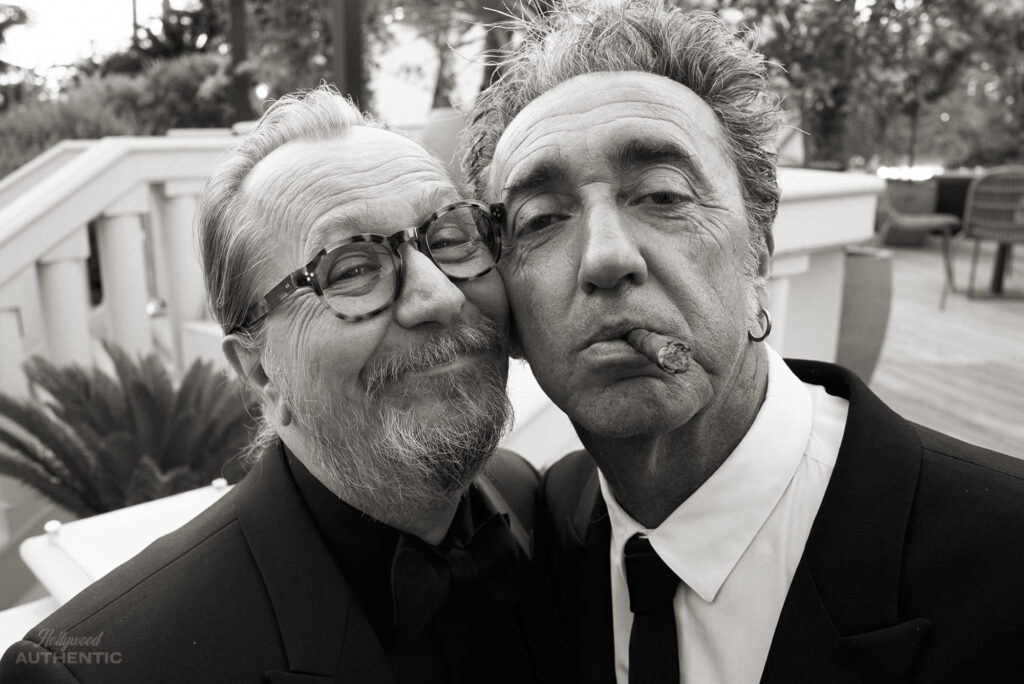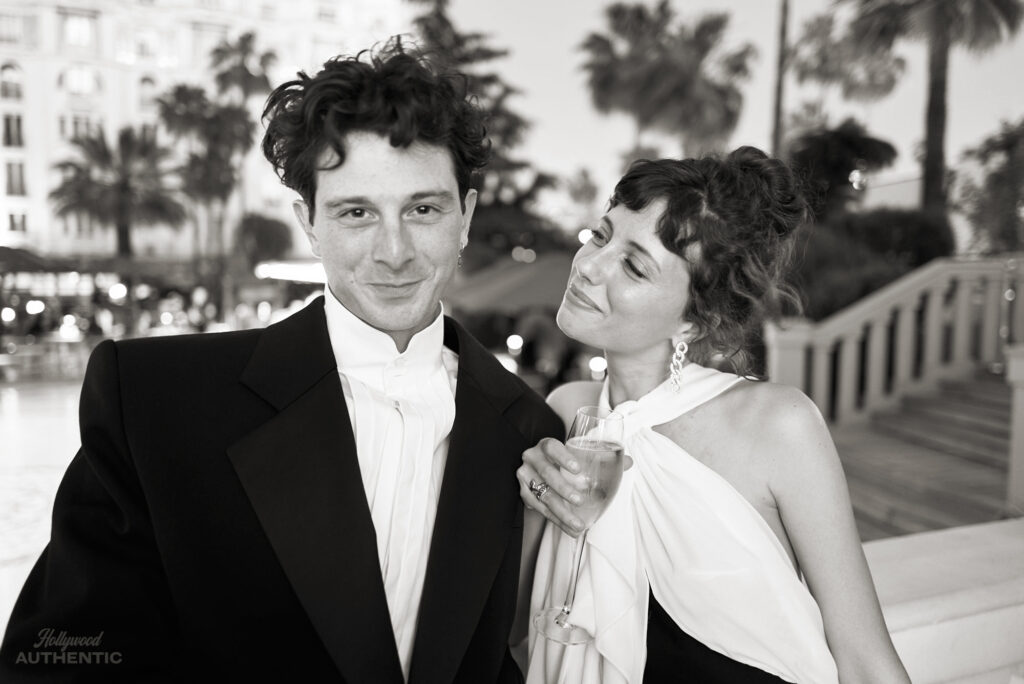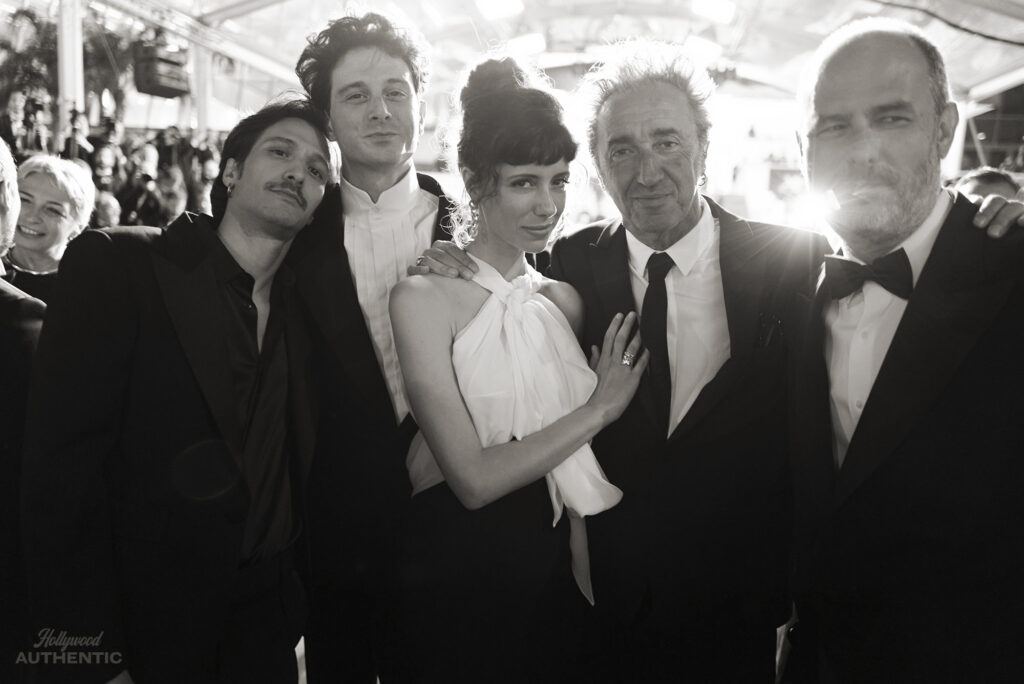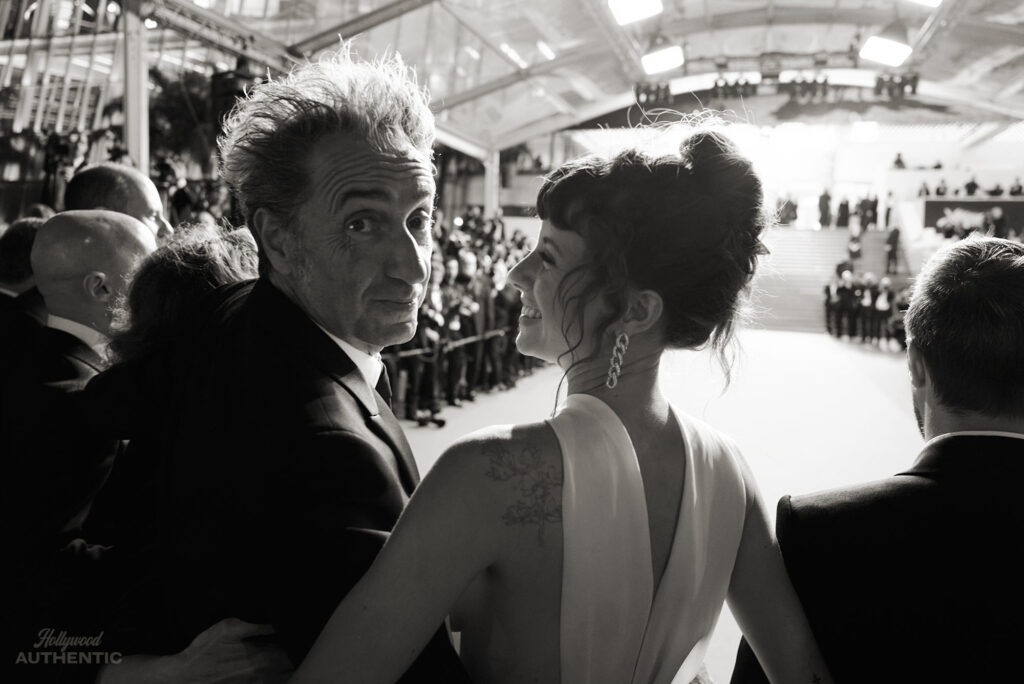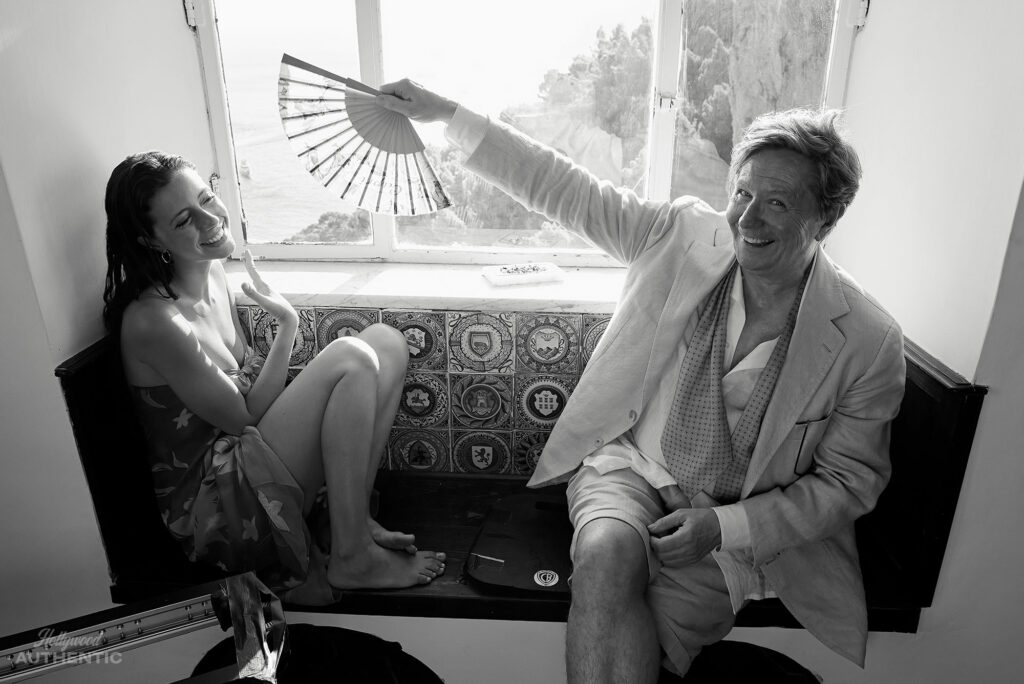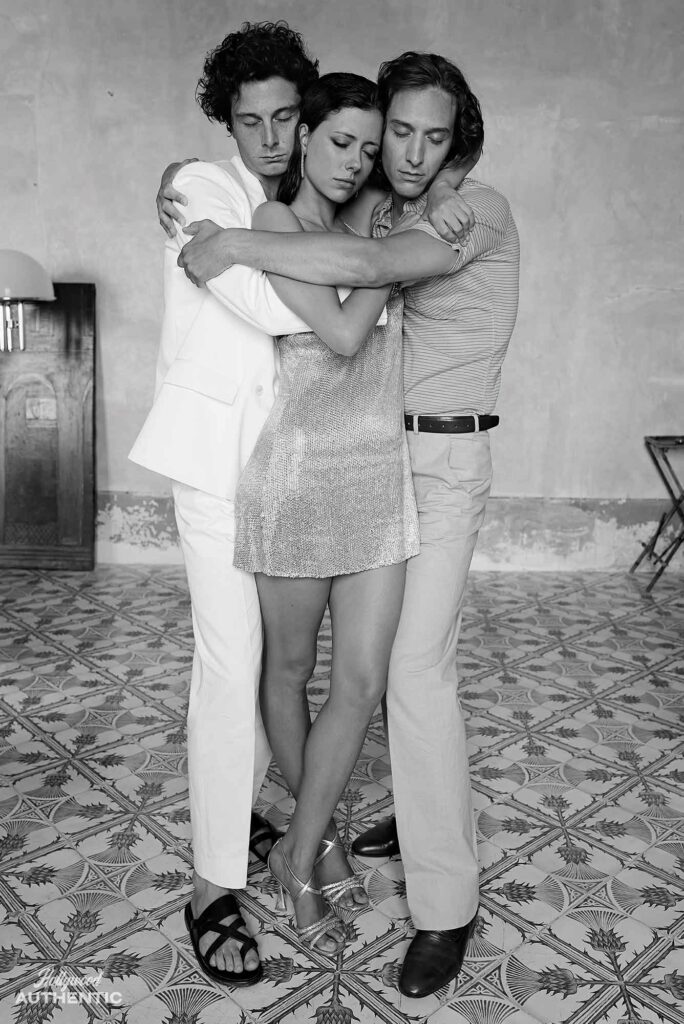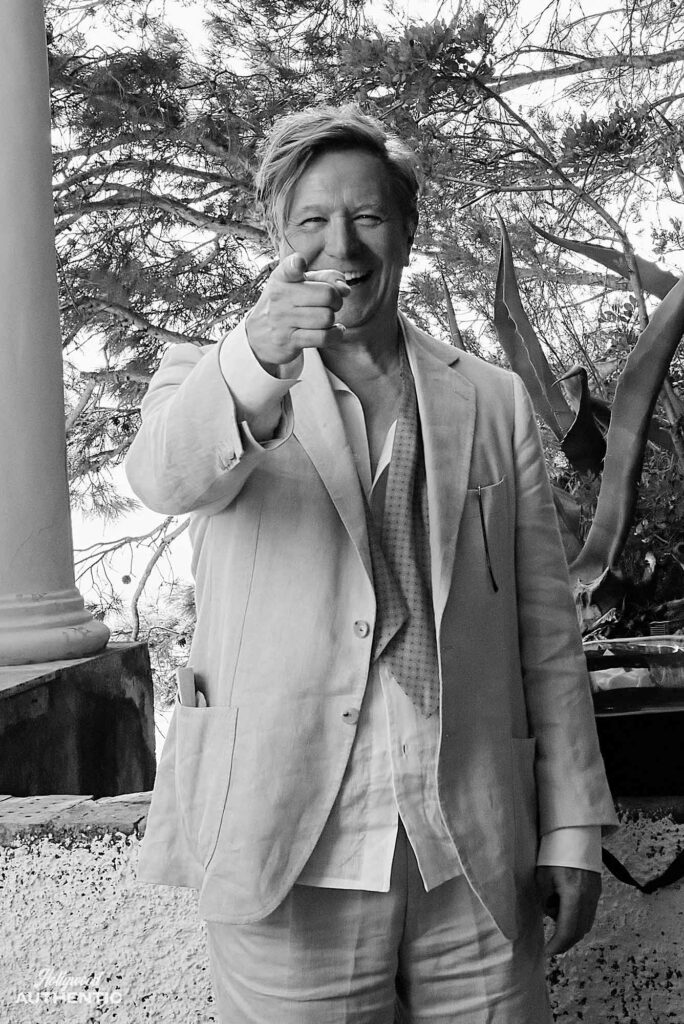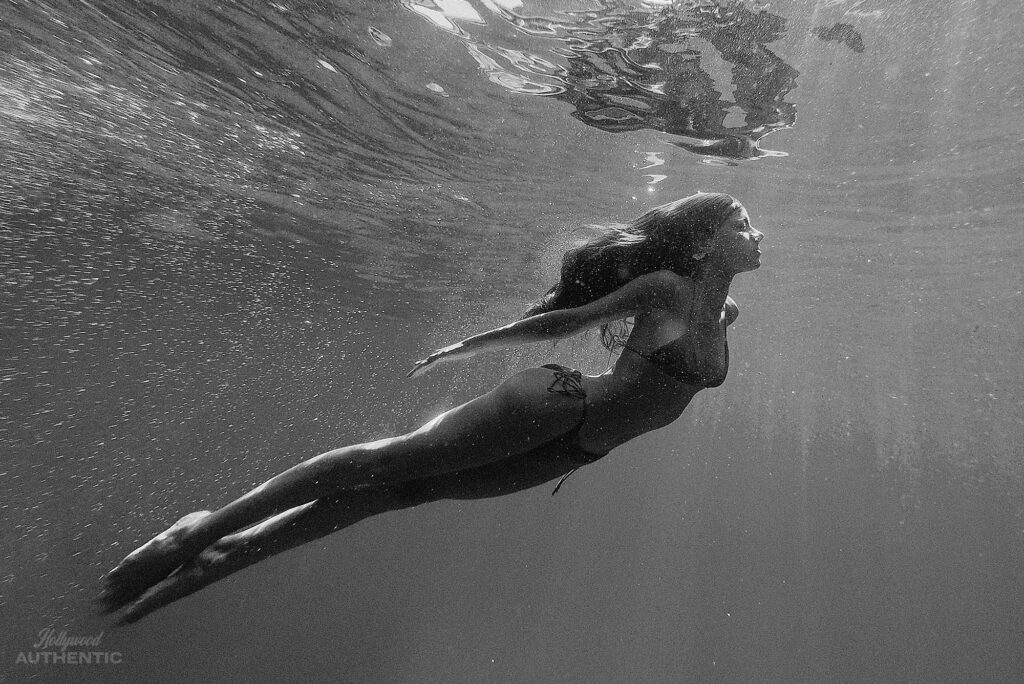Photographs by GREG WILLIAMS
Words by JANE CROWTHER
Paolo Sorrentino’s latest muse burns the screen up in Parthenope. Hollywood Authentic meets the Italian actor who made the leap from extra to lead to talk beauty, fame and the advice Gary Oldman gave her.

Sitting on the rooftop of the JW Marriott in Cannes, writer-director Paolo Sorrentino considers on his latest love letter to his home town of Naples. Why, he contemplates, did he choose to tell his story through the Greek myth of Parthenope (who precipitated the creation of the Bay of Naples) and focus on the siren at the heart of it? ‘What I wanted to do was to tell the story of a girl, a woman, from the moment she is born, to the moment in which she becomes an elderly person. What I really had at heart was telling how time changes us. And it does change us, even if we wear wonderful clothes.’ His currently leading lady certainly wears wonderful things in the sensual, smouldering film that almost gives audiences sunburn when watching. Sorrentino tells the tale of ‘70s Naples teen, Parthenope, born in water and drawn to the sea like a mermaid – seducing men without even trying as she puffs on cigarettes in a bikini, shimmers in sequins on the island of Capri and titillates in nothing but the ecclesiastical treasures of a horny cardinal.
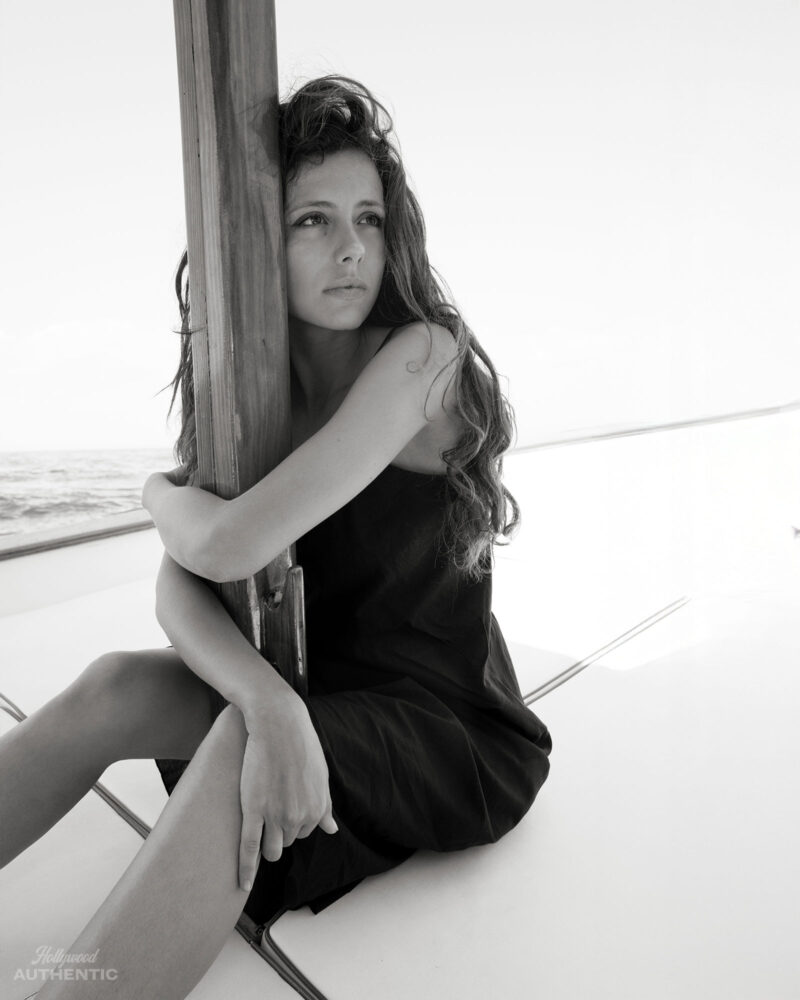
Quite the ask of any actor, but especially for a newcomer who would have to go toe-to-toe with heavyweight performers such as Gary Oldman, playing real-life writer John Cheever, who is sozzled and depressed on Capri and sees pure beauty in Parthenope. ‘I looked at many Italian actresses,’ Sorrentino admits. ‘In reality, I found her quite soon, because I had already met and worked with Celeste. She was in The Hand of God as an extra. It took me some time to understand whether she was going to be able to handle the role. She had never played a main character.’
Celeste Dalla Porta, a Milan-born actor whose scene as a background artist had ended up on the cutting room floor, was up for the challenge of conveying the intelligence of Parthenope (she’s a shrewd student anthropologist) as well as her sensuality. ‘I had no doubts, but I was a little bit scared,’ Dalla Porta says, twisting the mermaid ring on her finger that belonged to her character in the film. ‘Once I accepted it, I started questioning myself: will I be able to do it? But I never had a doubt about the project because it’s such a revolutionary thing.’ Her fears about the role also extended to the fame that will surely come with the release of the film, and how her life may change. ‘I don’t know what is in store for me ahead. I’m a little bit scared. But this is what I want to do, and what I always wanted to do, to be an actress.’
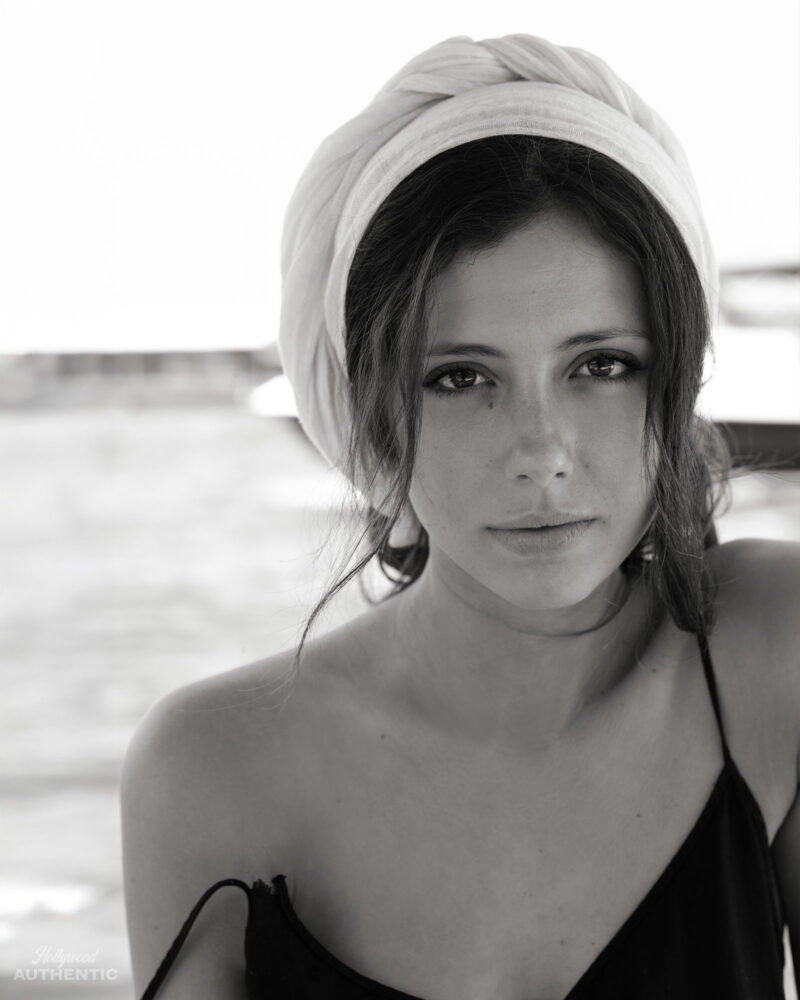
I have learned a lot with [Gary Oldman]. He is this huge actor that is so open and so attentive. He paid a lot of attention. He listens to you
The experience of working with Sorrentino was, she says, expansive and supportive. ‘He’s a 360-degrees person. He has a very authentic way of being on set. He knows exactly what he wants, and he guides you to that. But I felt free working with him. Paolo gives freedom to his actors. Of course, they cannot change the story, and they cannot change the text. But he is a man who is really able to listen to what other people have to say, and to see.’ Oldman was also something of an artistic reference point during the process despite only working for a few days together. ‘I have learned a lot with him. He is this huge actor that is so open and so attentive. He paid a lot of attention. He listens to you. So, on a human level, it was also such a great experience.’
The idea of weaponised beauty is explored in the film as Parthenope leaves a trail of broken hearts in her wake. Though Dalla Porta is shot in stunning light and via an appreciative lens she doesn’t consider herself a beauty. ‘I don’t think Paolo picked me or chose me because I’m beautiful. Beauty can also be something ugly and is subjective, and something that changes over time. In Parthenope beauty is a metaphor for youth. And youth – we all remember it as something very beautiful. We think about it as something very beautiful, and something that we idealise. But then Parthenope grows up. She moves into another phase of her life, and that’s when the movie changes. There is a different photography and different people around her, and a different way of looking at her.’

Having been the toast of Cannes when the film premiered at the festival last year, Dalla Porta is now looking for future projects. ‘I love Alice Rohrwacher. I find her to be a great, great artist, and I like her poetic way to see the world, and to tell stories. Ruben Östlund, I admire very much. Valerio Mieli – he made just a few films, but all of them talk about love. I’m super-romantic, and I love romanticism, and I love films that talk about love.’ As she navigates her way through her career she is also adhering to the advice Oldman gave to her about the business. As he tells Hollywood Authentic, their off-set relationship somewhat mirrored the one between their two characters, a mentor and a student. ‘The dynamic was very much like that with me and Celeste, because I’ve had this career, and I’m older. This is her first job, and she’s naïve. For Cheever, I think there’s an innocence and a purity that he can’t have back, that he can’t reclaim. Celeste will have an innocence and a purity that she will not be able to ever get back after this film comes out.’
Dalla Porta smiles as she recalls their chats on-set. ’He said that I have to protect what I have inside myself. I have to protect the beauty of simple things. That is something that we all have, and that we need to protect. It was very simple advice, but very important. If fame comes because you have made something that makes you feel happy inside, and it’s something you are happy with – why not? That’s what I want. And then people talk about the fame that is this kind of monster that is waiting…’ She shrugs. ‘I try to stay in the present, and to live in this moment.’
Parthenope is out in cinemas now
Written and directed by Academy Award Winner Paolo Sorrentino
Starring, in alphabetical order: Dario Aita, Celeste Dalla Porta, Silvia Degrandi, Isabella Ferrari, Lorenzo Gleijeses, Biagio Izzo, Marlon Joubert, Peppe Lanzetta, Nello Mascia, Gary Oldman, Silvio Orlando, Luisa Ranieri, Daniele Rienzo, Stefania Sandrelli and Alfonso Santagata.
A Fremantle film, an Italian-French co-production The Apartment – Pathé in association with Numero 10, in association with PiperFilm and Saint Laurent by Anthony Vaccarello with Logical Content Ventures with the support of Canal+ with the participation of Cine+. Produced by Lorenzo Mieli for The Apartment, a Fremantle Group company, Anthony Vaccarello for Saint Laurent, Paolo Sorrentino for Numero 10, Ardavan Safaee for Pathé.
International Distribution: Pathé, Northern US Distribution: A24, Italian distribution: PiperFilm.


